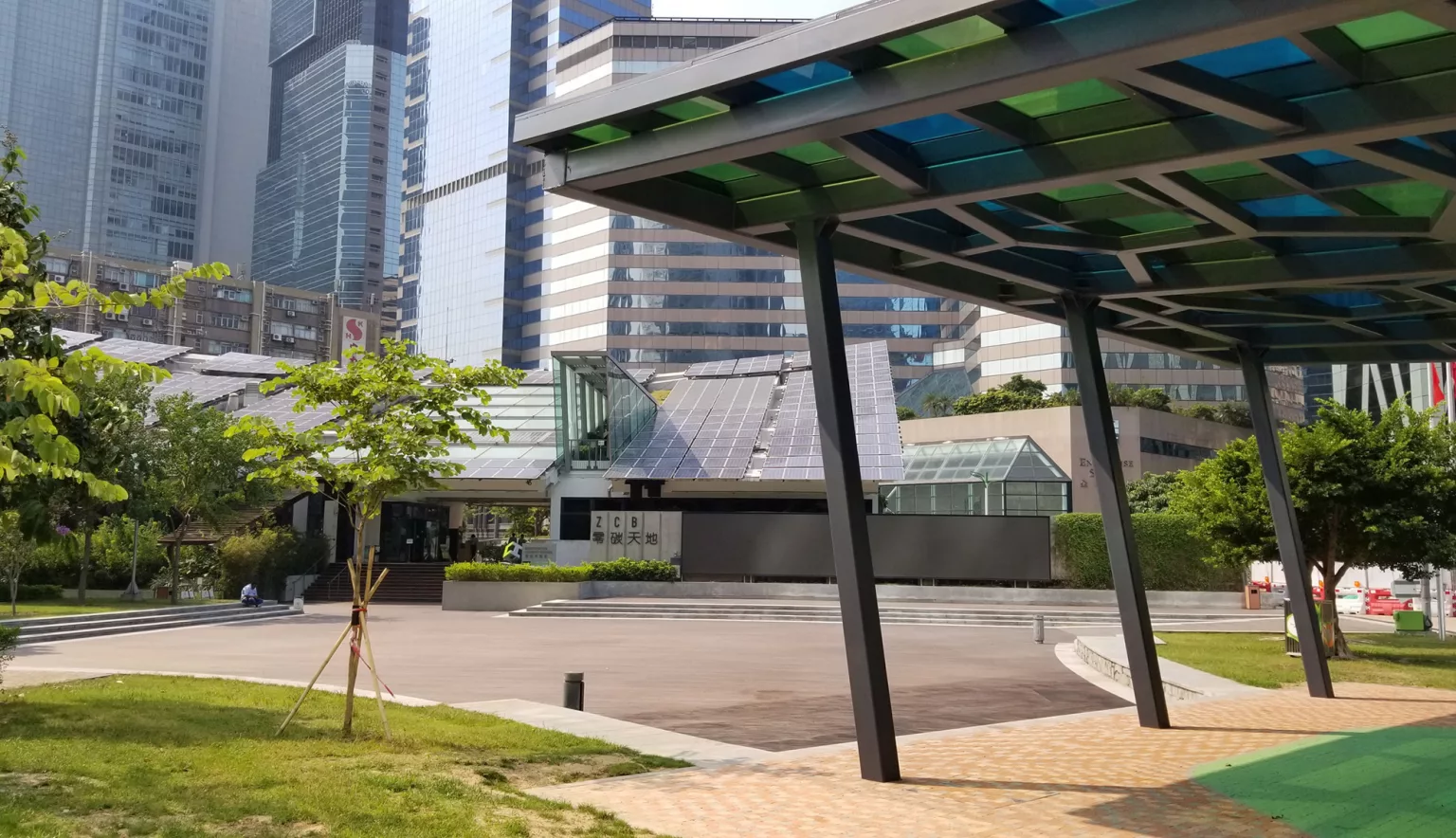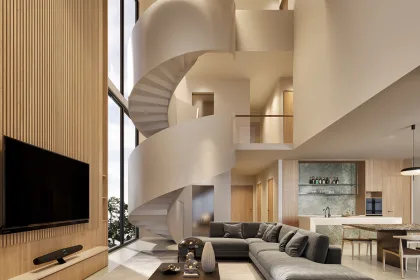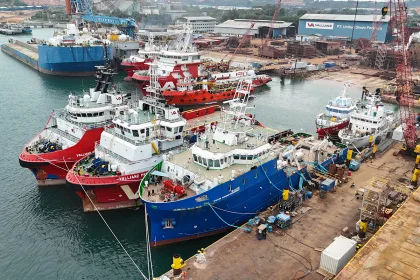Tony Ip Green Architects has been instrumental in driving forward sustainable building and renovation work in Hong Kong, bringing a number of landmark techniques and installations to the fore.
ARCHITECTURE FOR GREEN LIVING
In 2012 Hong Kong celebrated the opening of its first zero carbon building.
ZCP, short for Zero Carbon Park, is nestled in the Kowloon Bay area and is designed to produce a surplus of energy, its completion sparking a wave of green building projects which the government is eager to continue rolling out.
Working on this breakthrough project was Tony Ip, now Director of his own firm – Tony Ip Green Architects, or TiP as it is commonly known.
His multidisciplinary expertise proved invaluable on the ZCP development, although by his own admission, such broad knowledge was almost inadvertently acquired during his education years. Indeed, Tony’s story is a prime validation of the well-cited term ‘if you don’t succeed at first, try, try again’.
“I’ve always loved design and architecture but wasn’t accepted into the school of architecture I applied for, so my first degree was in environmental engineering as environmental conservation was not a hot topic two decades ago,” he recalls.
“After graduation, I worked as a trainee engineer in an engineering firm. Several years later, and I still retained this passion for architecture, so I tried to enrol on another course and this time, thankfully, was accepted.”
Tony never looked back. Having completed the two-year master’s programme, he was nominated and won the Hong Kong Institute of Architects Outstanding Student Medal Award. In 2010, he scooped the Hong Kong Institute of Architects Young Architect Award, and six years later was selected as one of Hong Kong’s Ten Outstanding Young Persons.
In 2017, Tony decided to form his own venture in the form of TiP.
“In HK, buildings consume 90 percent of electricity and are attributed to two thirds of greenhouse gas emissions,” the Director says. “To really drive change, we need to have a visionary approach and for every project we must set a benchmark for environmental considerations. This must be combined with embedding social sustainability as part of that vision.
“In Hong Kong we shouldn’t just focus on new buildings. For me, the key issue is also to regenerate and revitalise existing buildings to become more sustainable. Right now, half the building stock is over 30 years old and those buildings need to be demolished or upgraded, and that is a challenging issue.”
FOR PEOPLE AND PLANET
TiP’s portfolio reflects these thoughts. A mixture of new builds and renovation projects spread across Hong Kong, the company has proven itself as a pioneering force for sustainable development.
And this, for Tony, is the hallmark of his practice. “We are community-centric architects and designers who specialise in sustainable design and advocate the paradigm shift to green architecture and biophilic urban-scape at the tipping point of climate change.
“Our interdisciplinary and integrated expertise and experience drive us to achieve de-carbonising, regenerative, climate resilient and cost-effective design ideas and project execution, especially in high-density high-rise urban contexts.”
The firm’s scope of services includes urban design, master planning, architectural design and execution, interior design and build and green material innovation, together with sustainable design and green professionals’ input throughout the whole project process.
The Director points to many case studies to showcase this breadth of expertise, including the Health Ageing Community Centre in Kwai Tsing which is scheduled for completion in September 2020. Spanning 800 square metres, it is divided into four specialist zones covering different areas of wellness, TiP providing architectural planning and design services for the project, led by the HKSKH Lady MacLehose Centre.
Also under construction is the Chinese University of Hong Kong at Hong Kong Science Park, slated for handover towards the end of 2020. Here, TiP is the lead architectural and interior designer, as well as consultant for fitting-out works to six new InnoHK centres – laboratory spaces spread over numerous buildings that will spearhead cutting-edge research using advanced technology.
In Kowloon Bay, the firm recently completed renovation on the ZCP for the Construction Industry Council, a site all too familiar to Tony.
As well as using reclaimed materials, improving shading elements and helping to rebrand the site to the CIC-ZCP with new logos and signage designs, TiP also introduced a Hong Kong first in the form of an air improvement photovoltaic glass canopy. “By adopting nano-technology, the canopy generates renewable energy with diffuse daylight, decomposes PM2.5 pollutants and facilitates self-cleansing simultaneously,” Tony explains.
TiP also provided architectural design services for a stormwater air conditioning system at ZCP, again the first of its kind in Hong Kong, a system which uses stormwater as an alternative cooling and heating medium to serve the existing multi-purpose hall.
Tony is quick to point out the important role various partners and suppliers play in projects such as those already cited.
For example, GreenWalls Bioengineering (HK) Ltd recently supplied TiP’s Green Pavilion Heat Sink development, located at the UABB2019 & Construction Innovation Expo 2019 and completed in December 2019. The idea here was to present how advanced bioengineering, nano-technology and renewable technology mitigate greenhouse gas emissions, alleviate urban heat islands, and improve outdoor environmental quality.
“All of these projects show how partners and suppliers are important to TiP,” Tony adds. “Without their collaboration and input, we could not accomplish what we have across Hong Kong to this point.”
LOOKING AHEAD
And such collaborations will continue to ensure many more successful projects are delivered in the future.
Asked about TiP’s pipeline, Tony reveals an exciting partnership with B+G Design to act as the architect on the Urban Forestry Education Centre for the Conservancy Association, a challenging development which involves containing the entire site underneath a flyover.
This is one of several environmentally-driven and community-centric building projects that are set to get underway by the end of 2020, a year which will be remembered for the outbreak and spread of the coronavirus pandemic.
For TiP, the health crisis has sharpened minds on how important it is to pay attention to hygiene and wellbeing in its designs, from basic solutions such as sanitisation stations and separation of wet and dry areas to more advanced measures like quick access to medical equipment and installation of isolation rooms.
And for Tony, this all feeds into what a building’s purpose should be. Concluding the conversation, he lays out his vision regarding the role of green architecture.
“The green and sustainable building sector focuses on not only individual buildings, but neighbourhood, community development and infrastructure,” he says.
“We envisage that our role is not just that of an architect, but a facilitator for community engagement, a collaborator for inter-disciplinary innovation and an advocator for human-nature interactions in the green building and neighbourhood design process.
“There is no green architecture, only architecture for green living. This is what I believe as a green architect.”






































